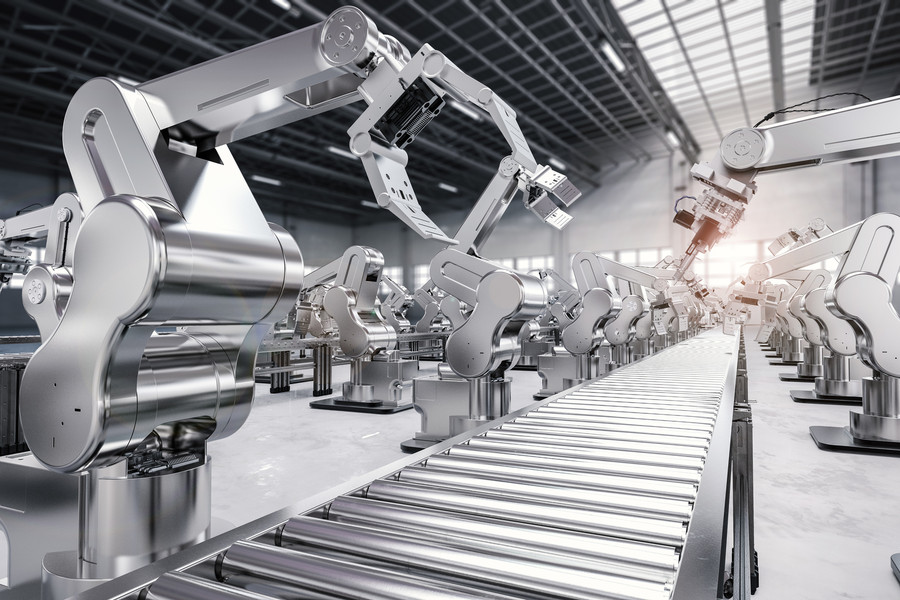






ITM Poland: on the verge of an industrial revolution
Industry 4.0 is one of the most popular economic slogans at the moment. On that account, those topics cannot be skipped at the forthcoming ITM Poland trade show. June in Poznań will no longer be the time to discuss trends, but specifics, as Industry 4.0 is nothing new; it is a necessity.

It is not a coincidence that this year's edition of ITM Poland in Poznań will feature dedicated sightseeing paths: "Towards Industry 4.0" and "3D Printing in industry". These two somewhat overlapping issues will be factors that will change the Polish industry. At least they should do so, as long as the Polish economy does not want to remain on the sideline of global trends.
The impressive growth of the Polish economy in the last quarter of the century was due to the determination and flexibility of Polish entrepreneurs, on one hand, but on the other hand, to the competitiveness being a result of cheaper (though well-qualified) workforce. We have started to run short of this competitive advantage last few years though. If we want to climb up the ladder of economic and civilization development, we need to put the economy on a new track. This is how we come back to the slogan of Industry 4.0.
For several years, this topic has been on the agenda at various business conferences, and each year we have observed a change in approach. Although it was initially treated as a marketing slogan by the majority of Polish businesses, today we are beginning to talk about the facts. Industry 4.0 is not just about production automation and robotization. This is a change in business philosophy that requires new tools - in terms of both machinery and software, new competencies for managers and employees, and a new approach on the part of customers. With progress and development accelerating, this revolution is just around the corner. It was only a few years ago that we saw autonomous vehicles in Sci-Fi movies. Now they are being tested. The Internet of things and big data are already becoming an everyday routine for business.
Will the Polish economy find its way into this revolution? Debates at ITM Poland may not yet provide answers to those questions, but they will certainly bring us closer to conclusions. Let us start with the advantages. Holding about 18% industry share in GDP and being one of the European leaders, Poland is certainly a powerful industrial base.
“The industrial production sector is one of the engines driving the development of the Polish economy. After the collapse related to the global crisis in 2009, the level of industrial production has been steadily on the increase. Digital transformation enables companies to develop even faster and gain a unique competitive advantage based on new technologies and innovative solutions,” says Mariusz Dziurdzia, PwC partner in the industrial manufacturing sector.
Poland is a European giant in the automotive industry, and the automotive industry is a major customer for industrial robots. According to the 2017 World Robotics report published by the IFR Statistical Department, the automotive industry in Poland received the highest number of new robots (37%).
The industry is also a leader in robotics with 182 robots operating per 10,000 workers. However, we are still at the beginning of the road to modernity. The average robotization density for all industries in Poland amounts to 32 robots per 10 thousand employees, with the global average of 74, whilst the European average is 99 robots per 10 thousand employees. Robotic density in the case of world leaders amounts to 631 for South Korea, 488 for Singapore and 309 for Germany per 10 thousand employees. As far as our neighbors in Central and Eastern Europe are concerned, IFR has calculated the robotization density at the following level: Slovakia 135, the Czech Republic 101 and Hungary 57 units per 10,000 employees.
The good news is that the Polish industry is developing rapidly. In 2017, it generated more than 222,000 new jobs, whilst the whole Union made up of 28 countries increased by merely 130,000 for the same sector. The increase in employment and record-low unemployment make it more and more difficult for companies to gain new employees. Robotization and automation of production may therefore be a necessity. In fact, this process has already started - in Q4 of the last year the investments of enterprises increased by 12%. Some of those investments were in new machines. “Demographic problems and work-related problems that we are observing in Poland at the moment may lead to an increase in investments in technologies that will replace people and thus increase productivity. Fragmentation of the industry can lead to greater flexibility and quicker adaptation to the necessary changes. In addition, information technologies, which we use for communication and other purposes, will force cooperation," says Julia Patorska, manager at Deloitte.
Another advantage is the relatively strong position of Polish companies in the 3D printing market, which indicates that 3D printing will be one of the main aspects of the upcoming industrial revolution, adapting products to the needs of a specific customer. This revolution means a shift from mass to individual production.
Another element of this great transformation will also be digitization, which is where there is considerable potential for growth. According to the PwC survey, 39% of Polish companies already declare a high level of digitization. PwC predicts that by 2020 Polish entrepreneurs will be spending 7.7% of their revenues on digitization.
"The latest economic data confirm that Poland has the potential to be an active participant of the industrial revolution. The economy is growing fast and investments have finally started. The upcoming ITM trade fair in Poznań will show how Polish companies can build a competitive advantage in order to achieve further successes worldwide," says Jerzy Wonka, Development Director at InfoCredit, a company engaged in the collection, provision and analysis of economic data.

